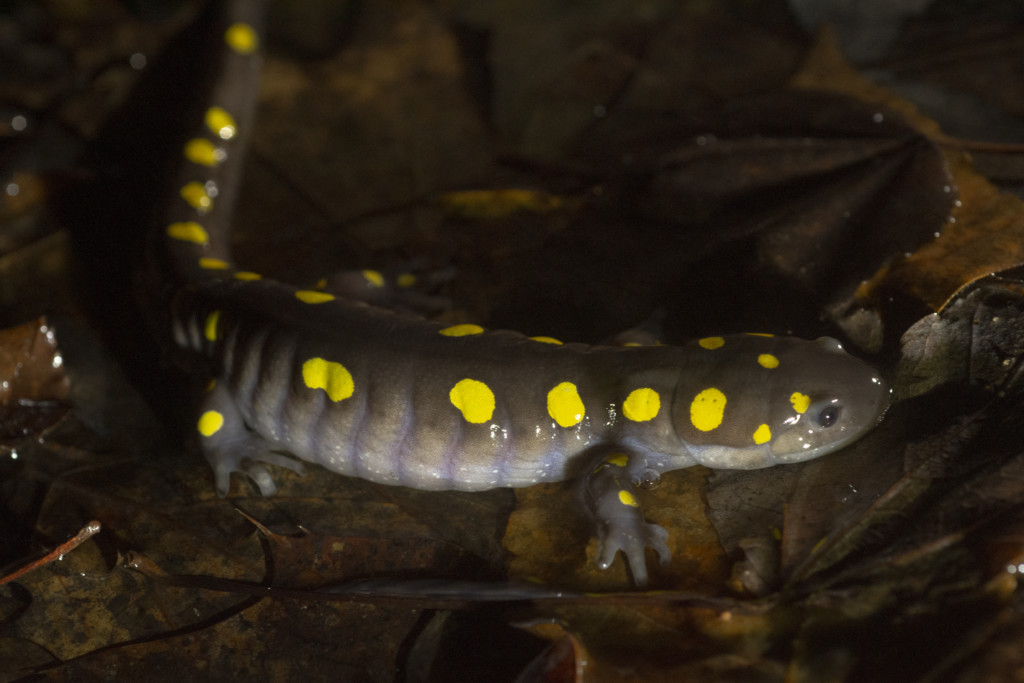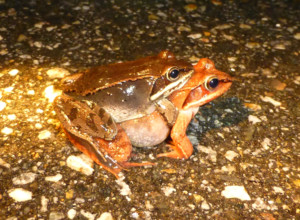Earth Notes: Another ‘Big Night’ unfolds

By Mary Jewett
Lakes Environmental Association
Spring is officially here! Loons, herons and other migratory birds are back, wildflowers are starting to emerge in the forest and, of course, the amphibians are migrating! Over the last couple of weeks, on the nice warm rainy nights, frogs and salamanders have been making their way from their forest habitat to wetlands to reproduce. The ideal place for amphibians to lay their eggs is in vernal pools, which are wetlands that fill with water in the spring and dry up by late summer. Most vernal pools are temporary and, due to their ephemeral nature, they lack fish, which greatly reduces predation on amphibian eggs.
For most places “Big Night” has already come and gone. The first big push of migrating amphibians is called Big Night, but it usually happens over a series of nights if the conditions are right. There will probably be some stragglers on the move in the coming weeks so keep an eye on the road, and your yard on rainy nights. Many wetlands already have frog and salamander egg masses, so now is a great time to go explore any wet places close to home. With most of the human population staying home, our amphibian friends probably had one of the safest migrations in quite some time.

Many different species make this journey in the spring, the most common being spring peepers, wood frogs and spotted salamanders. Sometimes, the frogs will get a head start and you will see a couple hopping together, the male gripping onto the larger female as they go. They will stay like that until she lays the eggs, with the male depositing his sperm onto the eggs as they enter the water. In this way, he can rest easy knowing that his genes have been passed on.
The undisputed rock star of Big Night is the spotted salamander. This large salamander (up to 8-inches) is black with striking yellow spots covering its body. On a wet road at night, they are nearly invisible unless you are going slow and looking very hard. Spotted salamanders are part of the mole salamander family and spend most of the year underground so, unless you go out during migration it is unlikely you will ever see one of these beauties.
Unlike frogs, salamanders do not “sing” to find a mate. Males make the journey first and, once they reach the pools, they deposit spermatophores, small packets of sperm that the females will take into their bodies to fertilize their eggs. A group of salamanders is called a congress, and on a good migration night it is an amazing thing to see. If you are lucky enough to have a pool near your home, go check it out, with a bright flashlight, on the next rainy night this spring and you might get a surprise.
If you do go out on the next rainy night, please stay close to home and wear reflective clothing on the roads. If you do see amphibians in the road help them out by bringing them to the side where they were headed. There are a lot less cars out and about but anyone in the road is in danger of being hit. If you see them in your yard or the woods just hang back and let them do their thing.
To see more pictures and videos of vernal pools and Big Night please visit mainelakes.org/big-night-2020/.

